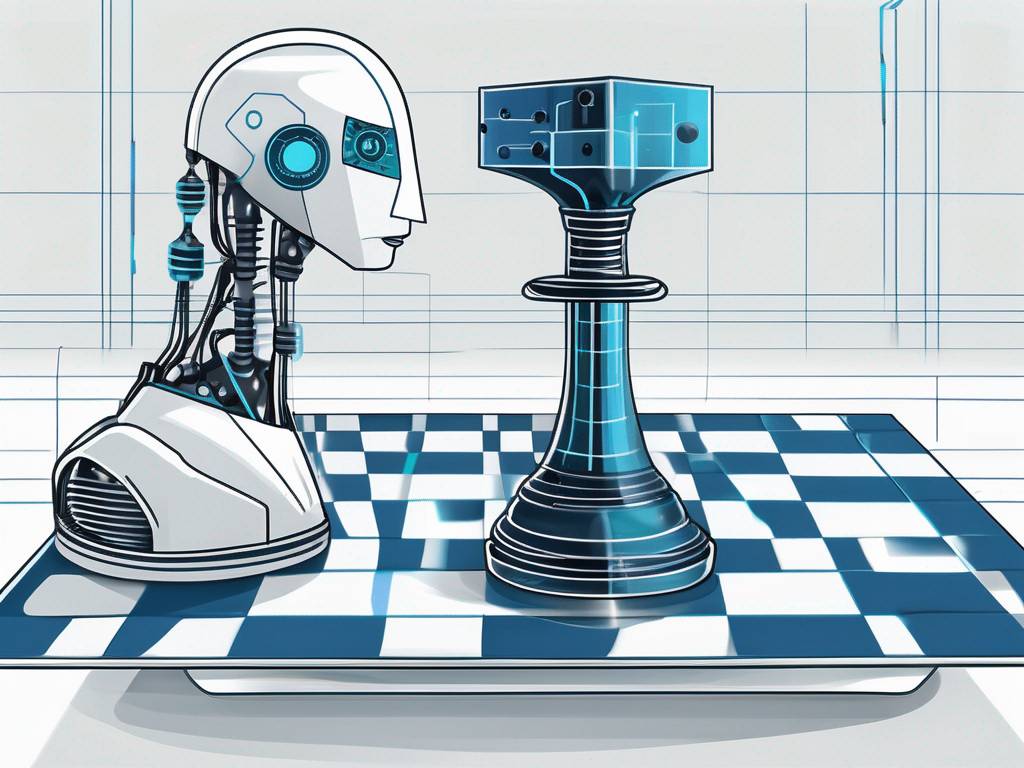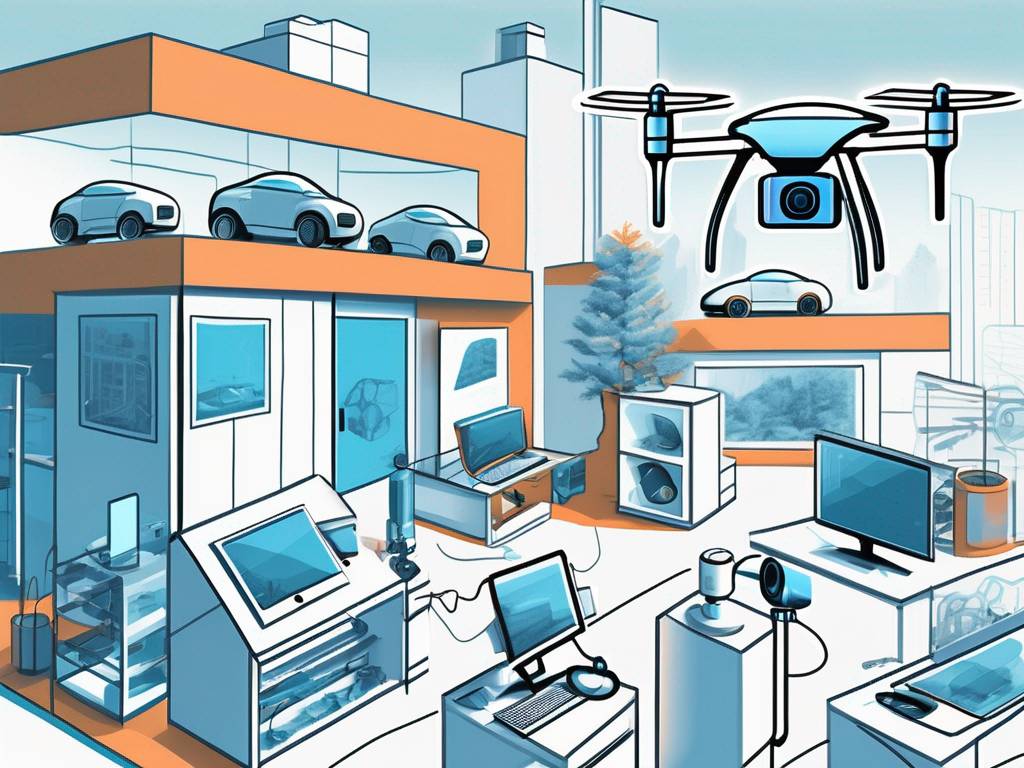Computer Vision: Artificial Intelligence Explained
Key Insights
- Computer vision is a field within artificial intelligence focused on enabling computers to interpret and understand visual information
- It plays a crucial role in various industries, including healthcare, manufacturing, and autonomous vehicles
- Advances in computer vision technology have the potential to revolutionize business operations and product quality
- C-level executives in any industry need a solid understanding of computer vision to leverage its advantages and stay ahead in the rapidly evolving business landscape
What is Computer Vision?
Computer vision is a multidisciplinary field that encompasses artificial intelligence, image processing, and machine learning. It involves developing algorithms and models that enable machines to recognize patterns, extract meaningful information, and make complex decisions based on visual input, much like humans do.
The Evolution of Computer Vision
The field of computer vision has evolved significantly over the years. Initially, computer vision algorithms heavily relied on hand-engineered features and rule-based techniques. However, with advancements in machine learning and deep learning, computer vision systems are now capable of automatically learning features and patterns from data. This has led to breakthroughs in object recognition, image classification, and image segmentation.
The availability of large annotated datasets, such as ImageNet, and the computational power provided by graphics processing units (GPUs) have significantly accelerated progress in computer vision research. The combination of deep learning algorithms and vast amounts of data has enabled companies to enhance operational efficiency and explore new possibilities for applying computer vision in various fields.
Importance of Computer Vision
Computer vision has recently gained significant importance due to the rise of self-driving cars, as it enables these vehicles to perceive their environment and make real-time driving decisions. For businesses, the value of computer vision lies in its ability to automate complex tasks that traditionally require human visual analysis. By leveraging computer vision technologies, businesses can enhance efficiency and drive innovation.
The Science Behind Computer Vision
Computer vision is a fascinating field that relies on a combination of image processing techniques and artificial intelligence principles to enable machines to understand and interpret visual information. By mimicking the human visual system, computer vision systems can analyze and make sense of images and videos in real-time.
How Does Computer Vision Work?
A computer vision system typically follows a pipeline that involves several stages. First, images or video frames are acquired through cameras or other sensors. This input data serves as the foundation for further analysis and processing.
Next, the acquired data undergoes preprocessing to enhance its quality, reduce noise, and extract relevant features. This preprocessing stage plays a crucial role in preparing the data for subsequent analysis and interpretation.
Once preprocessing is complete, the extracted features are used as input to machine learning models, such as convolutional neural networks (CNNs) or recurrent neural networks (RNNs). These models are pre-trained on large labeled datasets to learn complex patterns and relationships between visual data and their corresponding labels.
Training these models involves exposing them to a vast amount of labeled data, allowing them to recognize objects, detect anomalies, or perform other specific tasks based on their training objectives. Through this process, the models become capable of understanding and interpreting new visual information.
When the computer vision system receives new images or video frames, it processes this input using the trained models. Based on what the model was trained to do, it then produces specific outputs. These outputs can include:
- Identifying and labeling objects within an image or video frame
- Categorizing images into predefined classes
- Spotting unusual patterns or outliers in visual data
- Partitioning an image into segments and labeling each segment based on the objects they contain
- Identifying or verifying individuals based on facial features
- Detecting movement within a video sequence
These outputs enable the computer vision system to perform a wide range of tasks in industries such as agriculture and logistics, demonstrating its remarkable accuracy and versatility.
Key Technologies Powering Computer Vision
Several key technologies underpin computer vision systems, enabling them to achieve impressive results:
- Deep Learning: Deep learning algorithms, particularly CNNs, have revolutionized computer vision by enabling automated feature learning and end-to-end training. These algorithms have achieved remarkable success in various tasks, including image classification, object detection, and semantic segmentation.
- Image Processing: Image processing techniques, such as filtering, edge detection, and morphological operations, play a fundamental role in computer vision. These techniques are used to enhance images, extract relevant features, and reduce noise, ultimately improving the quality of the visual data.
- Object Recognition: Object recognition algorithms utilize feature extraction and pattern matching techniques to identify and classify objects in images or videos. By leveraging the learned features, these algorithms can accurately recognize and categorize different objects, contributing to various applications such as autonomous vehicles and surveillance systems.
- Image Segmentation: Image segmentation algorithms divide an image into meaningful regions based on similarity criteria. By dividing an image into distinct segments, computer vision systems can perform more detailed analysis and understanding of visual data. This technique is particularly useful in medical imaging, where it aids in identifying and analyzing specific structures or abnormalities.
- Anomaly Detection: Anomaly detection algorithms identify patterns in images or videos that do not conform to expected behavior. These algorithms are crucial for applications such as quality control in manufacturing, fraud detection in security systems, and identifying unusual activities in surveillance footage.
Applications of Computer Vision
Computer Vision in Everyday Life
Computer vision is seamlessly integrated into our daily lives through various technologies. It powers facial recognition technology for unlocking smartphones and drives augmented reality applications. On social media platforms, computer vision enables automatic photo tagging, allowing users to easily organize and search photos based on the people in them.
In traffic surveillance systems, computer vision systems monitor and analyze traffic patterns, detecting and tracking vehicles, pedestrians, and other objects. This provides valuable data for urban planning, helping to improve traffic flow and reduce congestion.
Additionally, computer vision enhances the ecommerce experience by enabling virtual try-on features. Customers can visualize how products like clothing or acrylic nails would look on them before making a purchase, increasing customer satisfaction and convenience for consumers.

Ordering press on nails just got a whole lot easier
- iOS app development
- Web application development
- Machine learning technology

Industrial Applications of Computer Vision
In the manufacturing sector, computer vision is a pivotal technology for quality control, enabling quick and accurate detection of defects such as scratches, dents, or misalignments that might elude human inspectors. This capability significantly enhances product consistency and overall quality.
Computer vision is also used in assembly line automation to streamline production processes by identifying and tracking components to ensure they are correctly positioned and assembled. This technology not only improves manufacturing efficiency, but also reduces the risk of errors and defects.
Overall, computer vision has become an indispensable technology in many aspects of our lives, enhancing our everyday experiences and improving efficiency and productivity in various industries.
The Future of Computer Vision
Emerging Trends in Computer Vision
One of the emerging trends in computer vision is the integration of computer vision systems with IoT devices and edge computing. This enables real-time analysis and decision-making at the network’s edge, enhancing efficiency in autonomous vehicles, smart surveillance, and industrial automation, where the immediate processing of visual data is crucial.
This integration minimizes latency and optimizes bandwidth by processing data locally. It also boosts privacy and security by reducing the need for extensive data transfers. Applications in smart homes, healthcare monitoring, retail analytics, and intelligent infrastructure benefit from this decentralized approach, making computing more efficient and responsive.
The integration of computer vision with edge devices also enables the development of intelligent and context-aware systems. These systems can interpret visual cues in real time, making informed decisions based on the analyzed data. For example, in retail settings, cameras equipped with computer vision capabilities at the edge can assess customer behavior, optimize inventory management, and personalize the shopping experience, all without relying on centralized processing.
Challenges in Computer Vision
While computer vision has made remarkable strides, its widespread adoption faces significant hurdles. Achieving highly accurate models capable of detecting and segmenting objects in cluttered or overlapping environments, and differentiating between visually similar objects or subtle variations, demands diverse and high-quality data. However, collecting and annotating such data across various conditions, backgrounds, and object types is labor-intensive and costly. Additionally, imbalanced class distributions in many datasets make learning rare features particularly challenging.
Environmental factors such as varying lighting, shadows, and adverse weather conditions can drastically affect model performance, necessitating robust systems that maintain accuracy across diverse settings. This requirement for robustness, in turn, increases the computational complexity of training deep learning models, demanding powerful GPUs and large memory resources. Deploying these computer vision applications is also complicated by hardware constraints and scalability issues. Continuous advancements in both algorithms and hardware are necessary to address these complexities.
Ethical and privacy concerns add complexity to adopting computer vision technologies. Bias in models, stemming from unbalanced training data, can lead to unfair outcomes, disproportionately affecting certain groups. Additionally, the widespread deployment of computer vision in public and private spaces can result in intrusive monitoring and tracking, infringing on privacy rights. Establishing stringent ethical guidelines and robust privacy protections will be crucial for the responsible and equitable use of these technologies.
Getting Started With Computer Vision
With over seven years of experience, a team of expert developers, and a track record of satisfying over 100 clients, WestLink is well-equipped to unlock the full potential of computer vision for your business. Our award-winning AI solutions are designed to enhance efficiency, automate processes, and decrease costs. If you’re looking to transform your company with cutting-edge, scalable, and robust computer vision solutions, consider partnering with WestLink to implement this innovative technology.
Questions?
-
What is computer vision?Toggle questionComputer vision is a dynamic and rapidly evolving field of artificial intelligence (AI) that focuses on enabling computers to interpret and understand visual information from the world around us. This field combines aspects of image processing, pattern recognition, and machine learning to develop algorithms and models capable of processing and analyzing visual data, such as images and videos. The ultimate goal of computer vision is to mimic the human visual system, allowing machines to recognize objects, understand scenes, and perform tasks that require visual perception, such as facial recognition, autonomous driving, and medical image analysis.
-
What is a computer vision engineer?Toggle questionA computer vision engineer is a specialized software engineer who focuses on developing and implementing algorithms and systems that enable computers to interpret and understand visual information from the world. Their work involves leveraging principles from image processing, machine learning, and artificial intelligence to create applications that can analyze images and videos, recognize patterns, and make decisions based on visual data.
-
How is AI impacting computer vision?Toggle questionAI is revolutionizing computer vision by significantly enhancing accuracy, performance, and efficiency through advanced deep learning techniques like convolutional neural networks (CNNs). These models excel at automatically extracting complex features from images, enabling more precise object detection, image classification, and segmentation.
-
What is a convolutional neural network (CNN)?Toggle questionA convolutional neural network (CNN) is a specialized type of deep neural network designed for processing and analyzing visual data. CNNs consist of multiple layers, each serving a specific function. Convolutional layers apply filters to the input image to detect local patterns such as edges, textures, and shapes, producing feature maps that highlight these specific features. Pooling layers then reduce the spatial dimensions of these feature maps using techniques like max pooling or average pooling, which lowers computational complexity and captures the most critical features. Fully connected layers connect every neuron in one layer to every neuron in the next, facilitating high-level reasoning and decision-making based on the extracted features. Due to their ability to automatically learn hierarchical feature representations directly from raw image data, CNNs are highly effective for tasks such as image classification, object detection, and various other computer vision applications.
-
What are the key computer vision techniques?Toggle questionComputer vision techniques include image processing methods like filtering, edge detection, and morphological operations to enhance image quality. Feature extraction techniques, such as keypoint detection with SIFT and SURF, help in recognizing objects. Object detection uses Haar cascades and deep learning models like YOLO and Faster R-CNN for accurate identification. Image segmentation methods, including thresholding and deep learning models like Mask R-CNN, classify pixels and distinguish objects. Image classification has evolved to using convolutional neural networks (CNNs) for learning hierarchical features. These key techniques are essential for applications in areas such as autonomous driving, medical imaging, and robotics.

 hello@westlink.com
hello@westlink.com  (866) 954-6533
(866) 954-6533  700 N Colorado Blvd,
700 N Colorado Blvd,






Comments